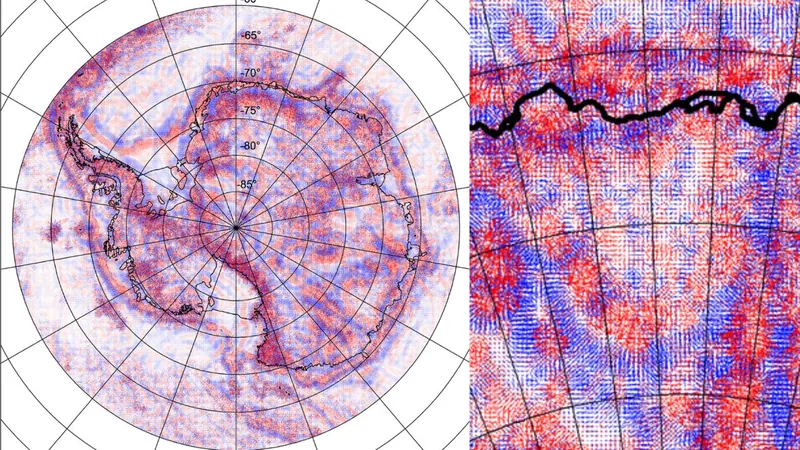
Unveiling the Mysteries of the Wilkes Land Crater: The Earth’s Hidden Titan Beneath Antarctica
2025-04-11
Author: Mei
Is This Antarctica's Greatest Hidden Secret?
Beneath the icy expanse of East Antarctica lies a geological marvel that has baffled scientists for decades: the Wilkes Land crater, an astonishing 315 miles (510 kilometers) across. This colossal anomaly, long suspected to be the result of a cataclysmic meteorite impact, has captured the attention of researchers since the 1960s.
A Gravitational Enigma
Initially discovered through anomalies in Earth's gravitational field, the Wilkes Land crater is even bigger than early seismic and gravity surveys suggested. While initial estimates capped its diameter at around 150 miles (240 km), advancements in technology have now revealed that this gargantuan crater is likely more than double that size!
Where Did It All Begin?
A groundbreaking 2018 study revealed that the Wilkes Land crater rests approximately 1 mile (1.6 km) under the icy blanket of Antarctica. This detailed examination also hinted at a fascinating historical connection between this crater and southern Australia, suggesting they were once joined until about 35 million years ago. Remarkably, the impact that created this monumental hole likely predates the splitting of the continents!
What Formed This Monstrous Crater?
Researchers have proposed several intriguing theories regarding the Wilkes Land crater's origin. Could it be a volcanic structure? A sedimentary basin? A heavily eroded valley? Or indeed, a meteor impact crater? A 2015 study utilized advanced remote sensing techniques to map the crater, ultimately supporting the meteor impact theory.
The Secrets Hidden Beneath the Ice
Deep within the crater lies something even more fascinating—a mass concentration, or 'mascon.' This structure likely formed when a meteor crashed through the Earth's crust and disturbed the mantle beneath it, leading to the formation of a dense plug that produces a gravitational anomaly. Intriguingly, the crater's shape isn’t even circular; it resembles a U-shape, with the northern side fragmented—likely due to tectonic shifts that once tore Australia from Antarctica.
The Biggest Impact Crater on Earth?
If confirmed as an impact crater, the Wilkes Land crater would reign supreme as the greatest known impact crater on Earth. The 2015 study highlighted that its immense diameter corresponds with the size and velocity of celestial bodies that frequently collided with our planet in its early years, approximately 4.1 to 3.8 billion years ago.
Continued Mysteries Await Discovery
Despite these findings, researchers acknowledge that other explanations for this subglacial structure remain plausible due to the thick ice sheet overhead. With its extraordinary size and potential historical significance, the Wilkes Land crater continues to intrigue scientists and offers a tantalizing glimpse into Earth’s ancient past.
A Gateway to Earth’s Dramatic History
Stay tuned as we explore more incredible places like the Wilkes Land crater, delving into the rich tapestry of history and science behind some of the most awe-inspiring landscapes on our planet.






 Brasil (PT)
Brasil (PT)
 Canada (EN)
Canada (EN)
 Chile (ES)
Chile (ES)
 Česko (CS)
Česko (CS)
 대한민국 (KO)
대한민국 (KO)
 España (ES)
España (ES)
 France (FR)
France (FR)
 Hong Kong (EN)
Hong Kong (EN)
 Italia (IT)
Italia (IT)
 日本 (JA)
日本 (JA)
 Magyarország (HU)
Magyarország (HU)
 Norge (NO)
Norge (NO)
 Polska (PL)
Polska (PL)
 Schweiz (DE)
Schweiz (DE)
 Singapore (EN)
Singapore (EN)
 Sverige (SV)
Sverige (SV)
 Suomi (FI)
Suomi (FI)
 Türkiye (TR)
Türkiye (TR)
 الإمارات العربية المتحدة (AR)
الإمارات العربية المتحدة (AR)